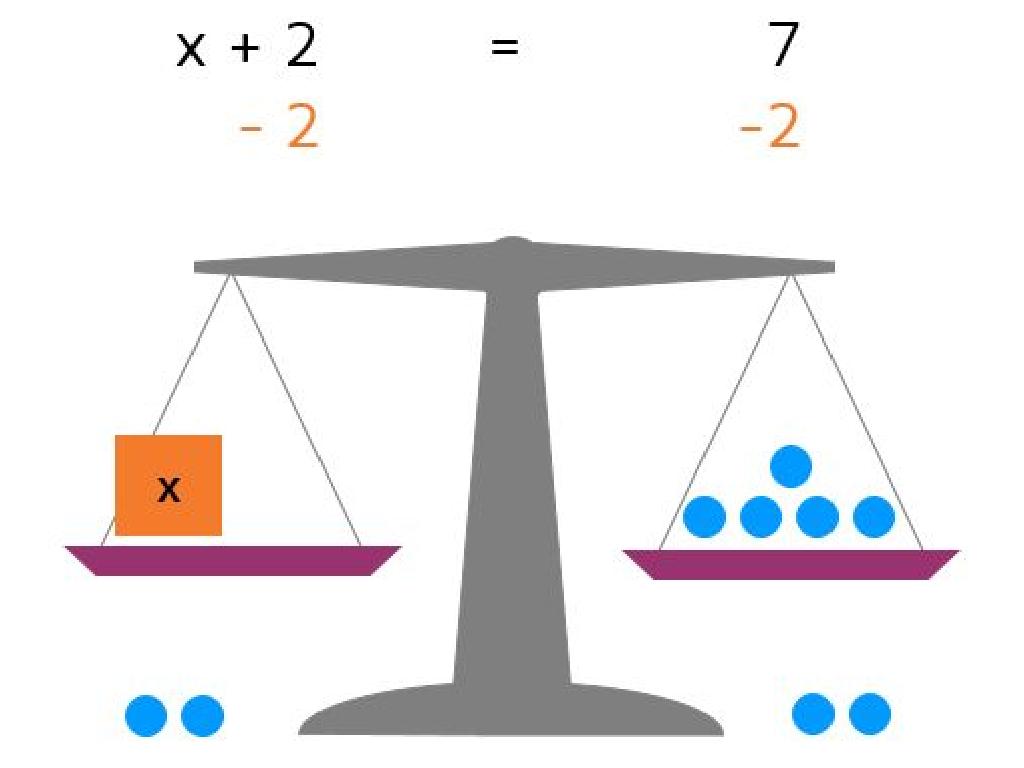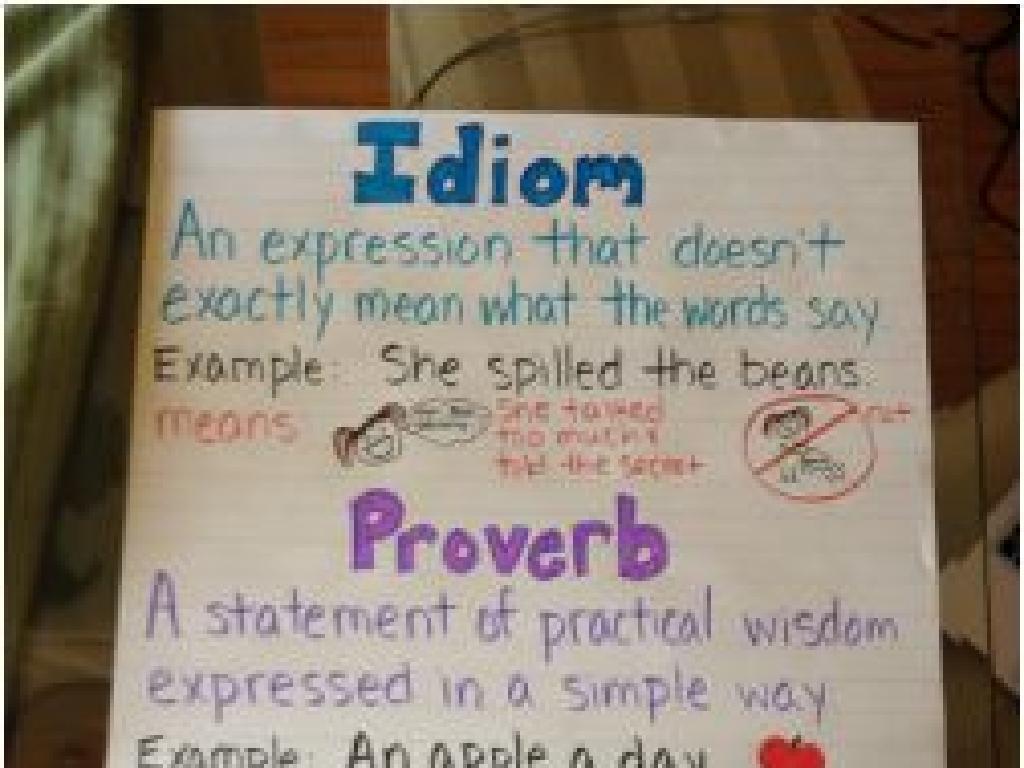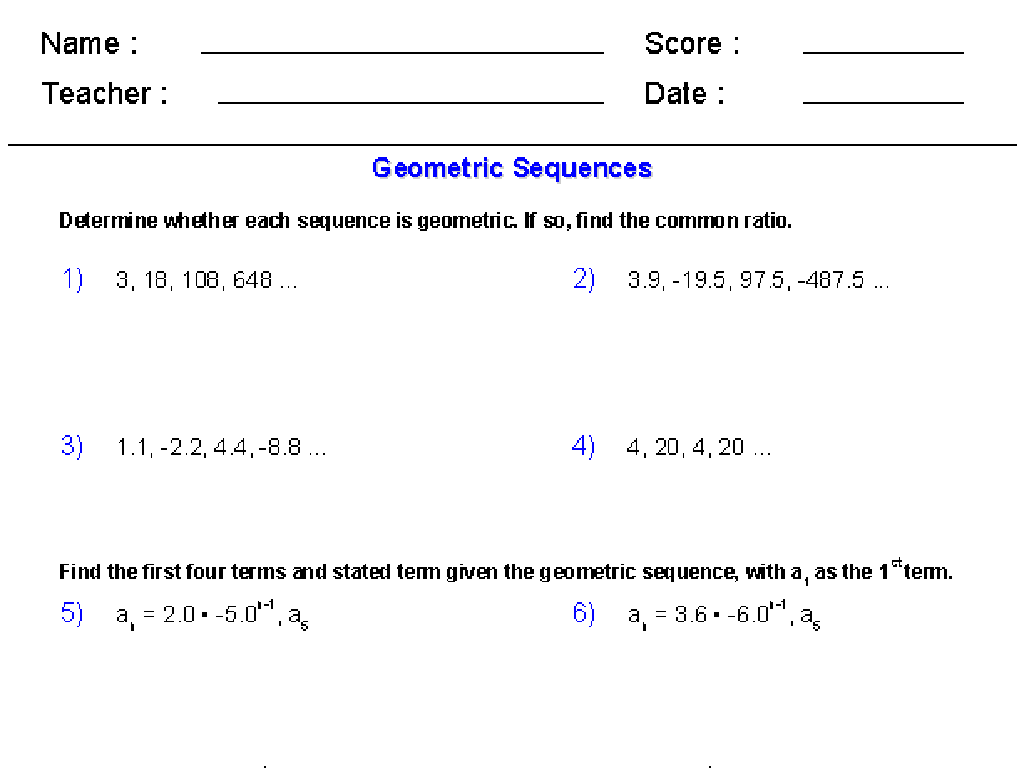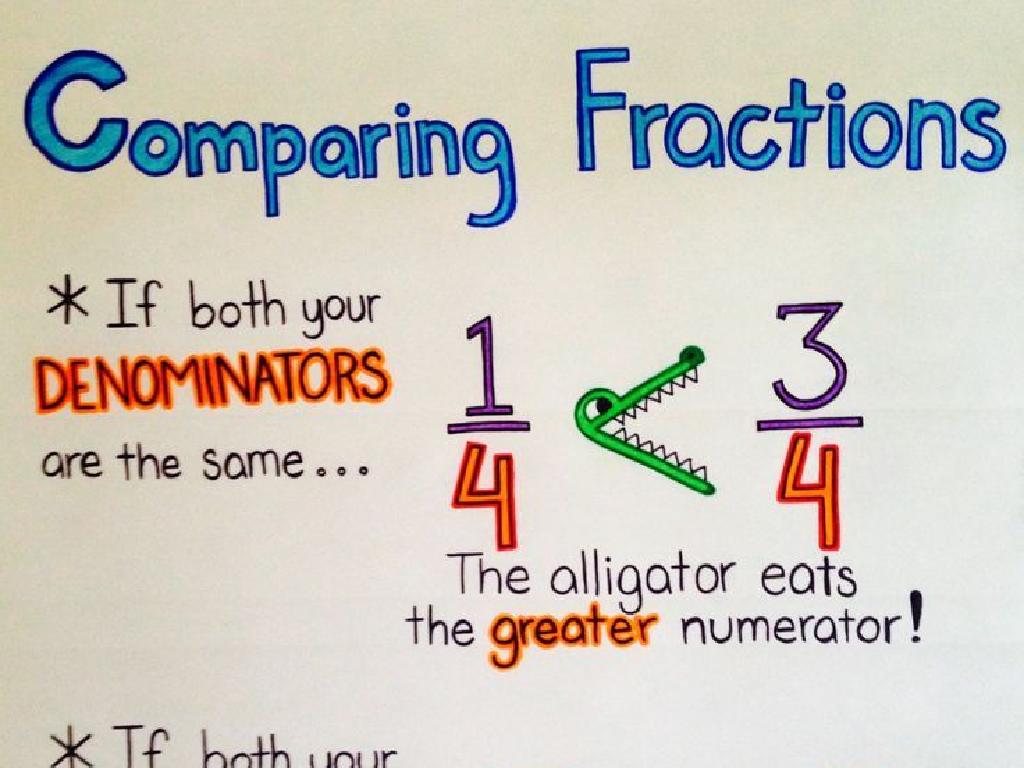Complete Multiplication And Division Equations With Integers
Subject: Math
Grade: Seventh grade
Topic: Operations With Integers
Please LOG IN to download the presentation. Access is available to registered users only.
View More Content
Operations with Integers: Multiplication & Division
– Understanding daily use of integers
– Integers are used in temperature, banking, and elevations.
– Multiplying and dividing integers
– Rules for multiplying/dividing positives and negatives.
– Setting today’s learning objectives
– Engaging with practice problems
– Solve sample problems to apply the rules.
|
This slide introduces students to the concept of integers in everyday life and the rules for multiplying and dividing them. Integers are whole numbers that can be positive, negative, or zero, commonly used in various daily scenarios such as reading temperatures, managing finances, or measuring above/below sea level. The lesson will cover the rules for multiplication and division with integers, emphasizing the different outcomes when combining positive and negative numbers. Today’s objectives include understanding these concepts and practicing with example problems to reinforce learning. Encourage students to think of real-life situations where they use integers. Provide a variety of practice problems for students to work on individually or in groups, ensuring they grasp the rules for operations with integers.
Understanding Integers in Math
– Define integers
– Integers include whole numbers, their negatives, and zero.
– Examples of integers
– Positive example: 5, Negative example: -3
– Integers on the number line
– Visualize integers as points on a line where zero is the center.
– Multiplication & division with integers
– Rules: Positive x Positive = Positive, Negative x Negative = Positive, Positive x Negative = Negative, and vice versa for division.
|
This slide introduces the concept of integers, which are the building blocks for understanding arithmetic operations in mathematics. Integers include all whole numbers, their opposites, and zero. Provide clear examples of positive and negative integers, and use a number line to help students visualize their placement and relationship with each other. Emphasize the rules for multiplication and division with integers, ensuring students understand that the product or quotient of two integers will depend on their signs. This foundational knowledge is crucial for solving equations involving integers.
Multiplication with Integers
– Rules for multiplying integers
– Same signs multiply to positive, different signs to negative
– Multiply positive & negative integers
– Example: (+3) * (-4) = -12, (-2) * (-2) = +4
– Work through practice problems
– Solve sample equations to apply rules
– Review solutions together
– Discuss solutions to reinforce concepts
|
This slide introduces the rules for multiplying integers, a key concept in 7th-grade math. Start by explaining that the product of two integers with the same sign is positive, while the product of two integers with different signs is negative. Provide clear examples with both positive and negative integers to illustrate the rules. Then, move on to practice problems, encouraging students to solve them independently or in small groups. Afterward, review the solutions as a class to ensure understanding. Emphasize the importance of these rules as foundational knowledge for algebra. Provide additional practice problems as homework for further reinforcement.
Division with Integers
– Rules for dividing integers
– Same signs divide to a positive, different signs to a negative
– Divide positive & negative integers
– Example: 8 ÷ -2 = -4, -8 ÷ 2 = -4
– Work through practice problems
– Solve: -12 ÷ 3, 15 ÷ -5, -18 ÷ -6
– Review problem solutions
– Discuss solutions: -4, -3, 3
|
This slide introduces students to the rules of dividing integers, emphasizing the sign of the result based on the signs of the numbers involved. When dividing two integers with the same sign, the result is positive, while different signs result in a negative outcome. Provide clear examples to illustrate these rules. The practice problems should be solved by the students, with the teacher guiding them through the process. After attempting the problems, review the solutions as a class to ensure understanding. Encourage students to explain their reasoning for each step to reinforce their learning.
Solving Equations with Integers
– Set up equations correctly
– Ensure variables and constants are on the correct side of the equation
– Solve using multiplication/division
– Apply inverse operations to isolate the variable
– Work through provided examples
– Follow along as we explore how to solve integer equations step-by-step
– Engage in guided practice
– Try solving similar problems with teacher support
|
This slide introduces the process of solving equations with integers, focusing on setting up equations properly and using multiplication and division as inverse operations to solve for the unknown variable. Emphasize the importance of keeping equations balanced and demonstrate the steps clearly with examples. During guided practice, circulate the room to assist students as they work through practice problems. Offer a variety of examples to cater to different skill levels and ensure that students are comfortable with the concept before moving on.
Class Activity: Integer Operations Relay
– Form groups for equation relay
– Solve integer multiplication & division
– Use both positive and negative integers
– Present group solutions to class
– Discuss approaches and answers
– Compare methods and learn from mistakes
|
This interactive class activity is designed to encourage collaboration and enhance understanding of integer operations through a relay format. Divide the class into small groups and provide each with a set of multiplication and division equations involving integers. Each group will work together to solve their equations and then present their solutions to the class. After presentations, lead a discussion on the different methods used to reach the correct answers, emphasizing the importance of understanding over memorization. Encourage students to explain their thought processes and to learn from any mistakes made. This activity will help solidify their skills in working with integers and understanding the rules of multiplication and division. Possible activities could include solving equations on a whiteboard race, creating a poster of their solutions, or peer-teaching their methods to the class.
Wrapping Up: Multiplication & Division with Integers
– Review key concepts from today
– Complete the practice worksheet
– Worksheet focuses on integer operations
– Check your answers carefully
– Use strategies learned to solve problems
– Bring questions to the next class
|
As we conclude today’s lesson on multiplication and division with integers, it’s important to recap the main points and ensure students understand the operations. The homework assignment is a practice worksheet that will reinforce today’s learning. Encourage students to attempt all problems and check their answers using the strategies discussed in class. Remind them that making mistakes is part of the learning process and to bring any questions they have to the next class for clarification. This will prepare them for more complex problems as they continue to explore operations with integers.





